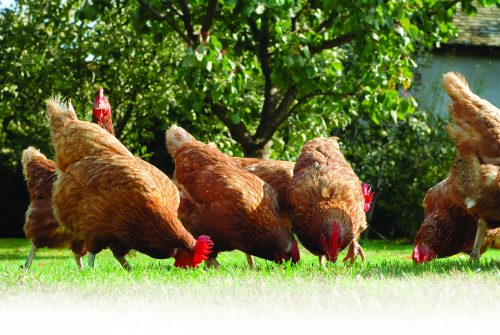
HFG senior nutritionist Rose Carr looks at the production of New Zealanders’ most popular meat.
We eat a lot of chicken. In 1986, New Zealanders ate around 14kg chicken per person; in 2010, we ate around 33kg per person and our chicken consumption accounted for 36 per cent of the meat we consumed, just ahead of beef at 31 per cent. Obviously, for meat to be accessible to most of us, animals must be farmed in large numbers, but we would like to think there are good standards around the farming and processing of our meat. There are a number of myths and controversies surrounding the poultry industry, so we wanted to find out more.
Are chickens given hormones to make them grow faster?
No. The use of hormones (including steroids) was banned decades ago in New Zealand. This ban is strictly enforced by the Ministry of Agriculture and Forestry (MAF). Advertising on chicken packaging that claims ‘no added hormones’ is stating an industry-wide position, not implying that someone else does add hormones. Using hormones in poultry farming has long been outlawed in most Western countries.
But is it true farmed chickens grow faster than others?
Yes. Chickens raised for their meat can mature in 28 to 40 days from hatching, depending on what size they are grown to. They grow faster than other chickens mainly because of their breeding and genetics. While they are selectively bred for positive traits, much in the way many animals have been for thousands of years, they are not genetically engineered or modified. Their nutrition is also carefully managed to optimise their growth.
New Zealand chickens grown for meat actually grow faster than their overseas counterparts because they are so healthy. As we don’t have any of the diseases common overseas, we don’t need to vaccinate our chickens as most countries do. And to protect the health of our stock, imports of raw chicken are not permitted.
What about antibiotics?
Antibiotics are used in poultry farming. Their use is strictly regulated by MAF. Antibiotics are only used to treat sick birds or to prevent the spread of infection and they can only be used on prescription from a vet. When birds have been given antibiotics there are strictly enforced ‘stand down’ periods to ensure birds sent for processing no longer have traces of antibiotics in their systems.
Concerns have been raised that using antibiotics in poultry, and other livestock, could lead to the development of resistant bacteria that might cause disease in humans. While studies have shown this risk is minimal, the selection and careful use of antibiotics is important to minimise any risks. That is why most of the antibiotics chosen for use in poultry are in classes of antibiotics not used for humans, or have extremely limited use in human medicine.
Since 1972, the Ministry of Health has monitored the prevalence of antibiotic resistance. There is no evidence to date from this monitoring that the use of in-feed antibiotics has caused resistance in people.
Are meat chickens kept in cages?
No. Most chickens raised for meat are raised indoors in large barns, and a small but growing proportion (around five per cent) is free range, which means they have access to outside areas.
Barn-raised chickens have access to feed and water, and are protected from the elements, but it is very much high-density living with the larger barns containing up to 40,000 chickens. Having said that, our maximum allowable density at 38kg per square metre is lower than is permitted in the European Union. Organic chickens are usually raised with access to the outdoors.
I bought a chicken that had been ‘basted’ to make it more tender. What does that mean?
This means the chicken meat is marinated or basted with salts and food acids to improve the meat’s tenderness and flavour. The flavours may be made into a brine consistency and injected into the chicken meat. The salty brine helps tenderise the meat by assisting to break up the muscle fibres. You may see small holes in the chicken where the brine has been injected. As a factory produces thousands of marinated chickens each day these injections are done by machine, although the process is similar to how you cut and insert flavours into meat at home. Keep in mind this process will add sodium to the chicken on your plate, so compare the nutrition information on different products.
www.healthyfood.com










